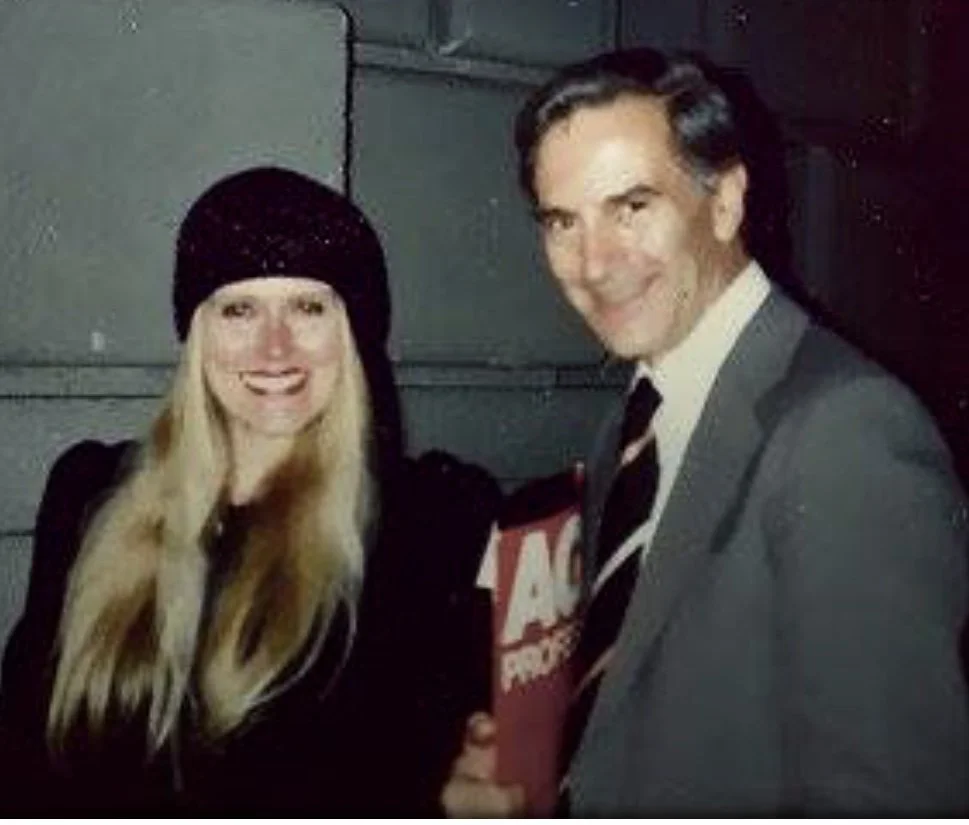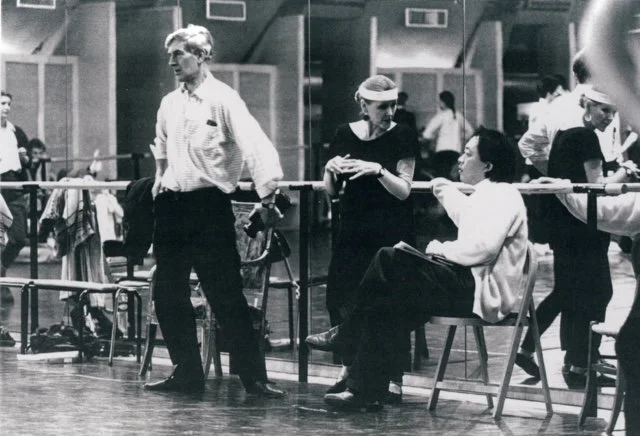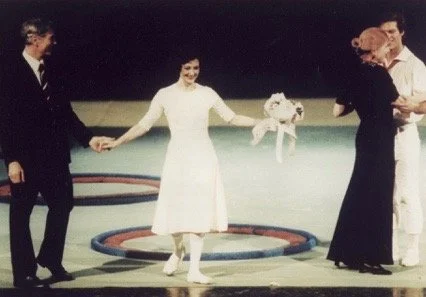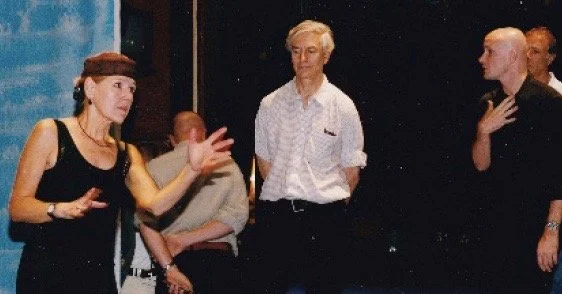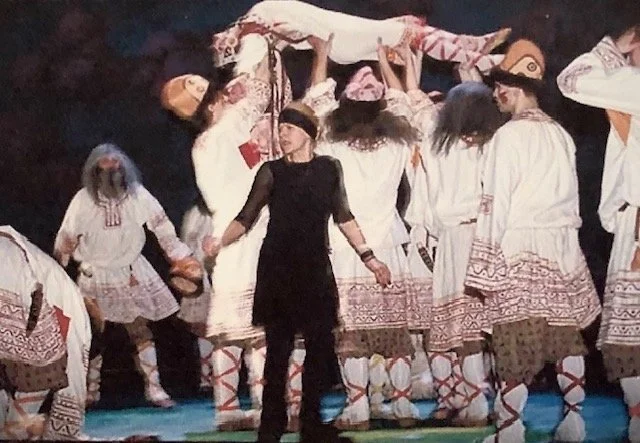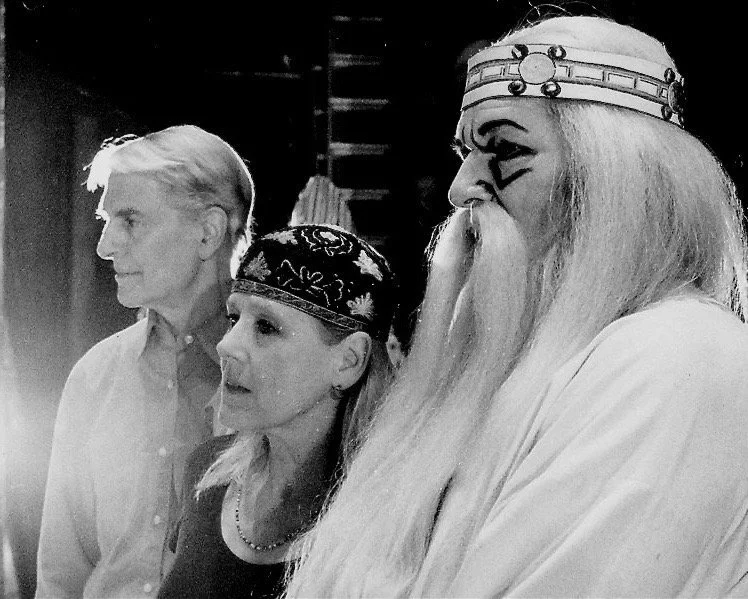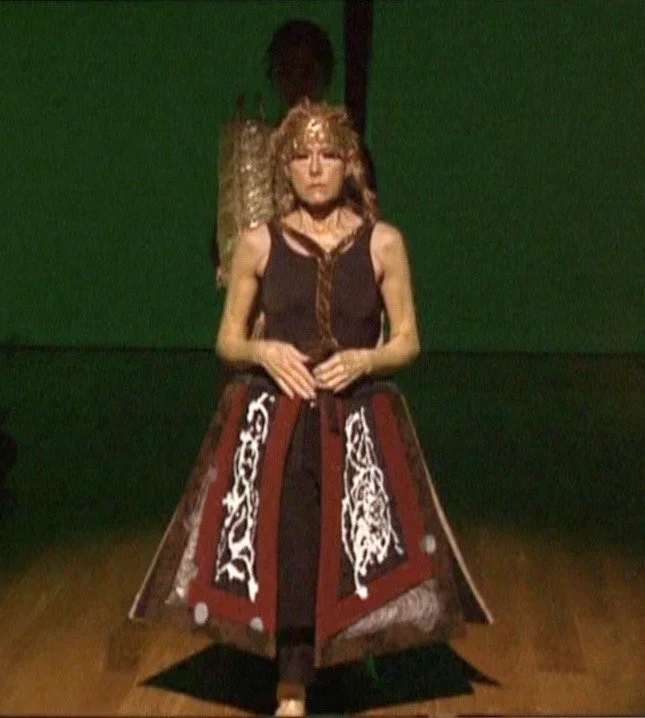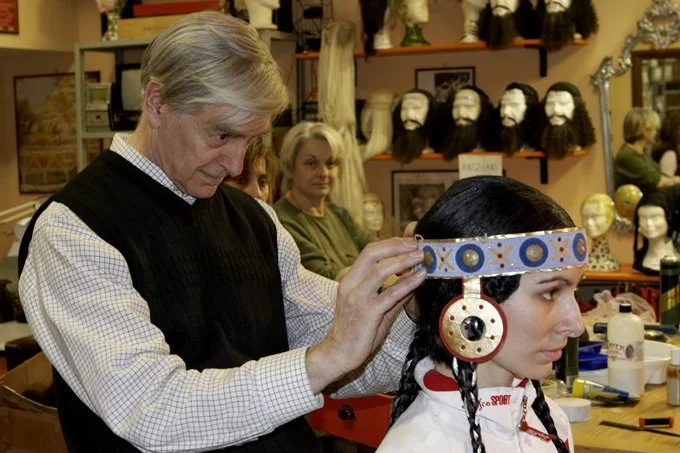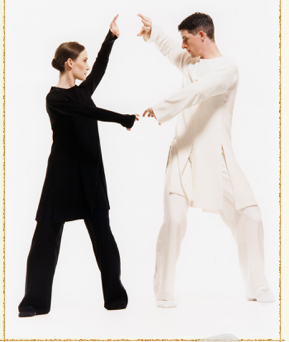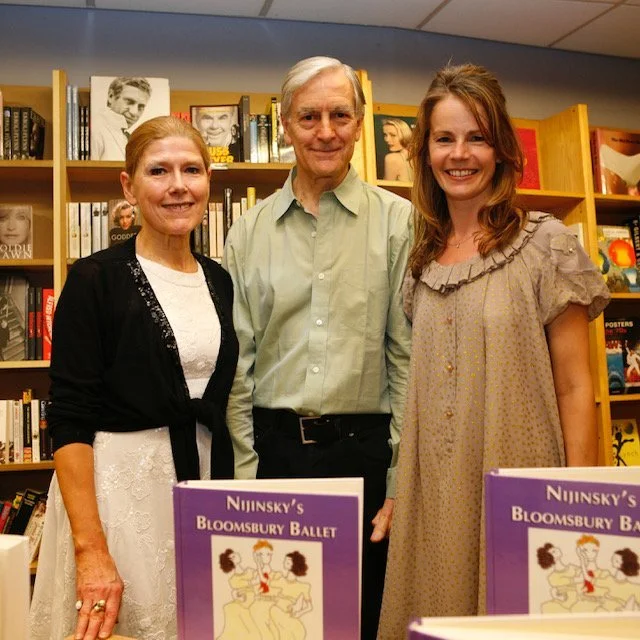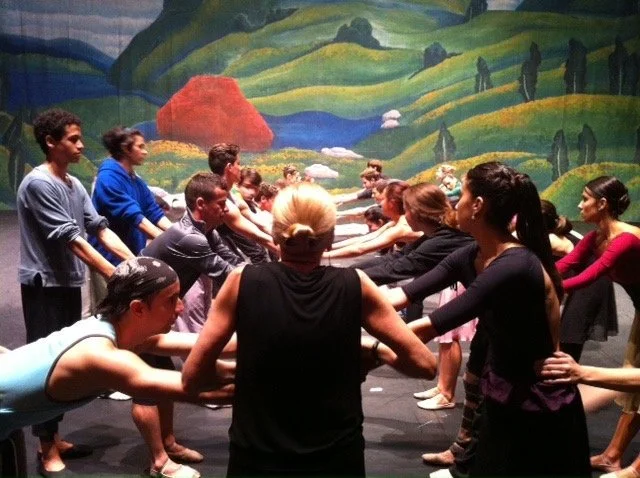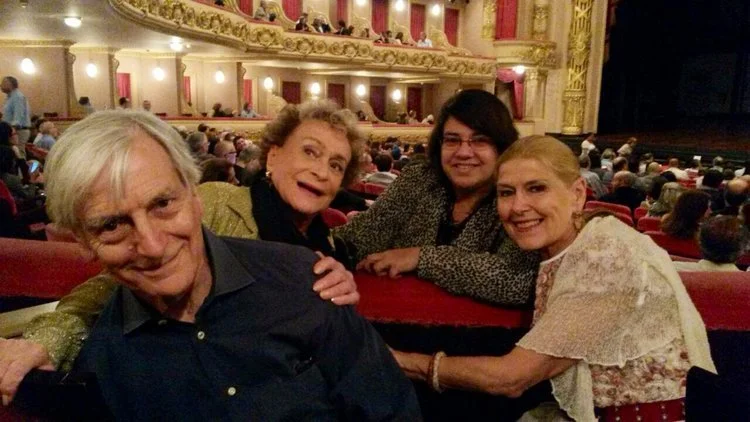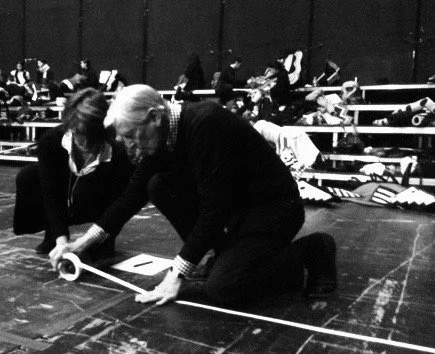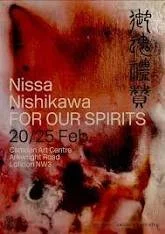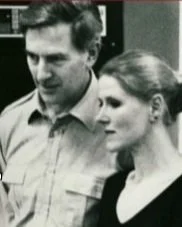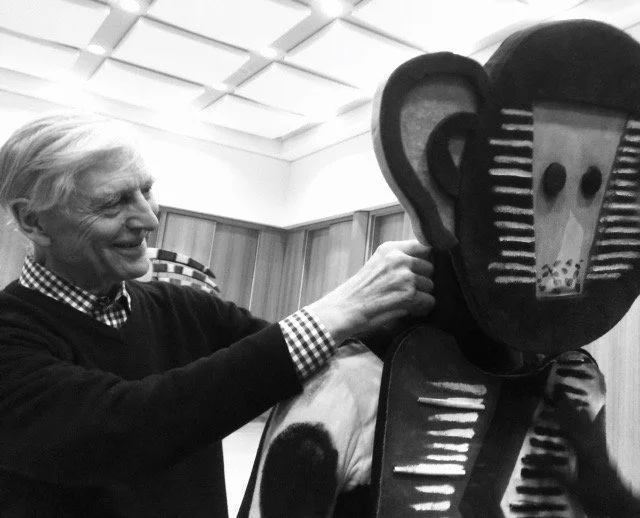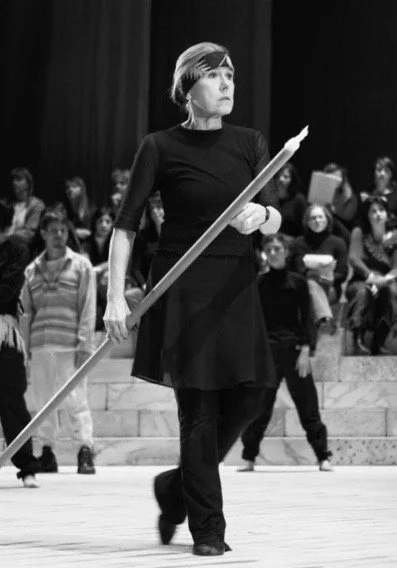Welcome to Ballets Old & New
First rehearsal of the 1913 Rite after Nijinsky, Joffrey Ballet,New York, 1987. Photo John Allen.
Millicent Hodson and Kenneth Archer, a dance and design team based in London, reconstruct lost ballets and create new ones under their partnership name of Ballets Old & New.
Hodson is an American choreographer, dance historian and graphic artist. Archer is a British scenic consultant and historian of the arts.
The ballets they reconstruct are lost works from the early twentieth century repertoire. The criteria for their choice are that the ballet is a significant work created by a well-known, gifted composer, designer and choreographer.
Their repertoire draws upon the Ballets Russes companies of Diaghilev and De Basil plus its Ballets Suédois competitor, Rolf de Maré, with three choreographic works after Vaslav Nijinsky, five after George Balanchine and four after Jean Börlin. The composers include Igor Stravinsky, Claude Debussy, Arthur Honegger, and the designers Henri Matisse, Fernand Léger, Naum Gabo.
Their productions have been staged at such theatres as Paris Opera, Rome Opera, Royal Ballet, London, Mariinsky, St. Petersburg, and Theatro Municipal, Rio de Janeiro.
Reconstruction drawings by the couple have been widely exhibited at New York Public Library Lincoln Center, Hyogo Performing Arts Centre in Kobe, Japan and national opera houses in London, Paris, Helsinki, Stockholm, Hamburg and Warsaw plus many other cultural centres.
Among their awards are Nijinsky Medals from the Polish Embassy, London in 1990, the BBC Magazine DVD of the Year in 2006 and the Positano Prize for ballet heritage in 2013. They have had lectureships from Indiana University, Princeton University, Bard College and the North Carolina School of the Arts as well as fellowships from the Indian Council for Cultural Relations and Radcliffe Trust in the UK, and in the US from the International Research and Exchanges Board and the Center for Ballet and the Arts at New York University.
Hodson and Archer are scholars as well as artists. Their work is based on research and they lecture extensively on both the reconstructions and creations. Their publications include books and articles with Pendragon and Parkstone Press, Dance Magazine, Ballet Review, Parabola, Ballet Tanz, Dancing Times, Dance Now and Pinakoteka. They have lectured at venues like the Guggenheim and MOMA, New York; BOZAR, Brussels; Barbican, London; and Tate St Ives.
Hodson has an MA in literature and a PhD in cinema and the arts of spectacle from the University of California, Berkeley. Archer has an MA in theatrical design and painting from Antioch University and a PhD in the history and theory of art from the University of Essex, Colchester.
When the couple met in London in 1981, they discovered that since the early 1970s they had both been researching The Rite of Spring, unaware of each other’s efforts. Hodson’s interest in The Rite was sparked at UC Berkeley when she saw photos of the original dancers in the 1913 costumes by the ballet’s scenarist and designer, Nicholas Roerich. And she was intrigued that Nijinsky, the choreographer of The Rite, had lectured at Berkeley during the Ballets Russes American tour of 1916-1917. Similar photos enthused Archer when he saw them at Cardiff University with a Latvian linguist who had served as secretary to Roerich in the 1920s and 1930s. Hodson and Archer, soon after their first meeting, decided to collaborate and embarked together to research The Rite in England, the USA, France, Monaco, India and what was then the USSR. They married in 1982.
Hodson has brought to their reconstruction partnership the experience of directing her own dance troupes in San Fransisco and New York and coordinating special events at the University Art Museum, Berkeley, as well as exhibiting and publishing drawings of her choreography.
Fitting massive Cubist monkey mask for Flux Lab at Megaron Theatre in Athens. Photo Cynthia Odier. Athens 2018.
Archer performed internationally as a model, doing fashion shows with dancers from the Royal Ballet and Sadler’s Wells and worked with such top photographers as Terence Donovan and film directors like Cy Enfield. Also useful to their reconstructions was his training in gemmology, jewellery making and antique restoration.
Between them they combine the talents and skills that enable them to gather complex information and record it in choreographic notebooks and design dossiers they use to stage works at the many ballet companies, theatres and opera houses that hire them.
Acting as each other’s assistant they work together on all aspects of a production. Liaising with the artistic director, they set choreography, supervise the costumes, accessories, decor, props, wigs and make up and participate in lighting and publicity.
The couple’s first reconstruction was The Rite of Spring commissioned in 1987 for the Joffrey Ballet of Los Angeles and New York by artistic director, Robert Joffrey. Hodson and Archer have since done twelve further productions of The Rite in Europe, Brazil and Japan.
The reconstructed Rite proved an instant success. The Joffrey Ballet toured it throughout the United States and performed it in Canada and Europe.Then WNET Channel Thirteen in New York and several other television companies did documentaries about the making of the reconstruction, and in 2006 the BBC in London used the Finnish staging to create a feature film entitled Riot at the Rite.
The centenary of The Rite in 2013 focussed attention again on the reconstruction. Restagings, exhibitions and conferences were organized in a number of countries and the Mariinsky’s performance at the Théâtre des Champs-Elysées in Paris was streamed worldwide by French television.
Other Hodson-Archer reconstructions that were immediately popular include Jeux, given first by the Verona Ballet, then the Royal Ballet, London, the Joffrey Ballet, Chicago and elsewhere. Another hit was the reconstruction of Le Chant du Rossignol staged first by Les Ballets de Monte-Carlo and later by Ballet West in Salt Lake City and other companies. Dutch TV made a prize winning documentary, 4 Emperors and 1 Nightingale, about the Monte-Carlo Chant.
Training Carla Fracci to use Demeter’s torch in the search for her abducted daughter Persephone, the Rome Opera, 2007. Photo Shira Klasmer.
Another popular hit was La Création du Monde, commissioned by Geneva’s Fluxum Foundation. After the premiere three restagings followed with Maggiodanza in Florence, the Ballet de Lorraine in Nancy, which toured with it to various European capitals, and a final restaging at the Megaron Theatre in Athens. Documentaries were done by Flux Lab Geneva and Athens.
The first ballet creation by Hodson and Archer was Fate’s Warning: Homage to Isadora Duncan.
Commissioned for the San Carlo Theatre in Naples by Beppe Menegatti, it was the first in a cycle of five solos and a prelude danced by Carla Fracci. The first three were in 1990, the others in 1997, 1998 and 2003. Between 1990 and 2003, Fracci performed the solos in Italy, France, Cuba, Germany, Finland, Sweden, Japan and Russia.
Menegatti commissioned and directed four other creations in the period between 1991 and 2007, including dance dramas that had premieres in Milan, Vicenza and Palermo as well as the Stravinsky opera Perséphone in Rome.
Hodson and Archer have also created works for the Olympic Ballet Company in Milan, 59 Degrees North in Stockholm, Princeton University in New Jersey, the Hellenic Centre and Camden Arts Centre in London.
